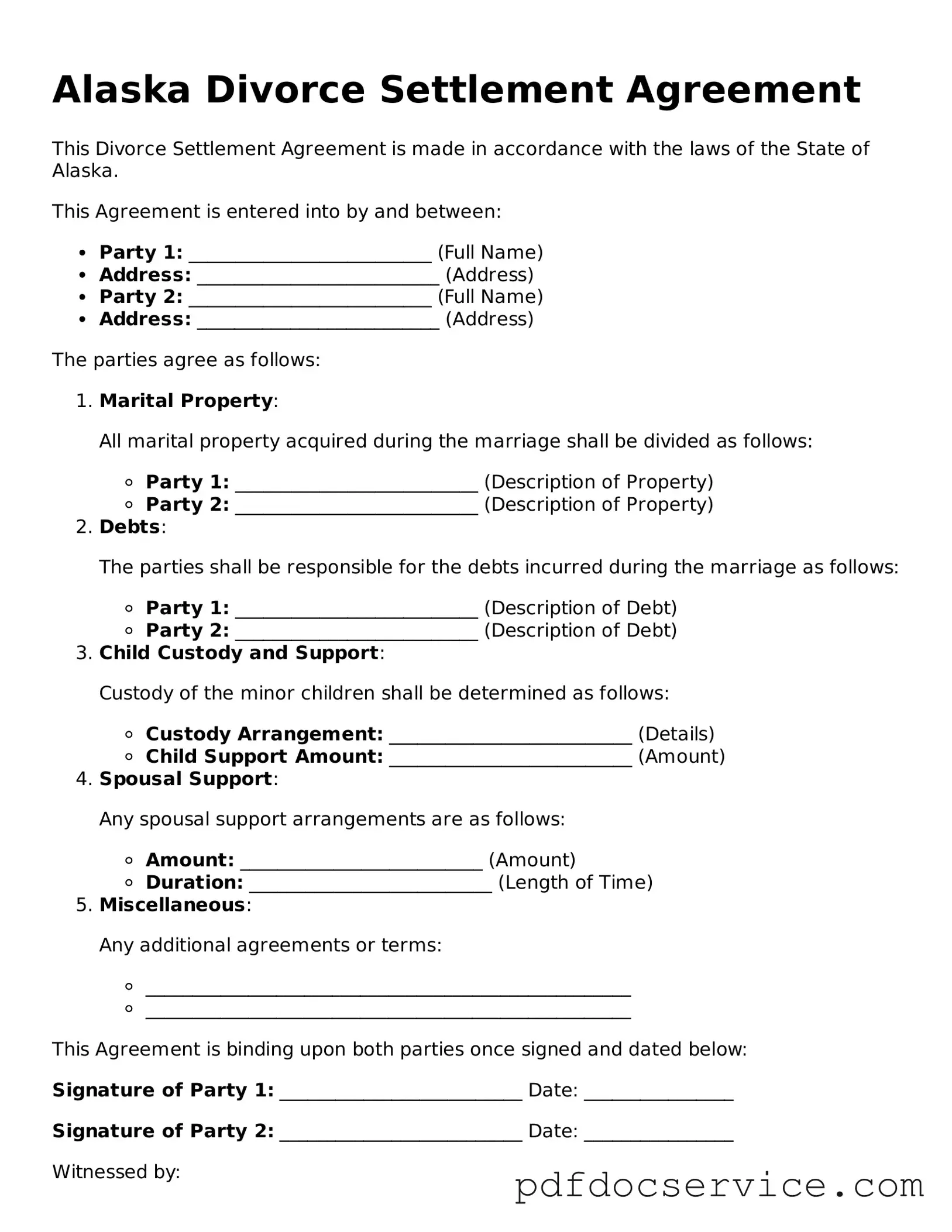Printable Divorce Settlement Agreement Template for Alaska
The Alaska Divorce Settlement Agreement form is a crucial legal document that outlines the terms agreed upon by both spouses during the divorce process. This form serves to detail the division of assets, child custody arrangements, and any spousal support obligations. Understanding its components can help ensure a smoother transition during what can be a challenging time.
Open Divorce Settlement Agreement Editor
